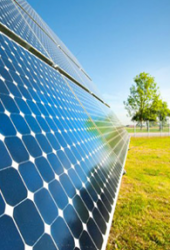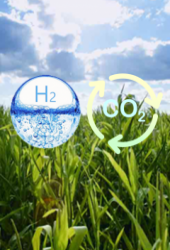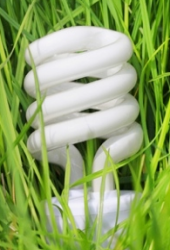Detail:
- ABSTRACT
This paper is prepared for the study of the impact of Transportation Energy Price on Commuting and Energy Expenditure of Bangkok Residents who travel daily from outside to inside City Center in the morning rush hour 6.00 – 9.00 am. The optimum routes were selected to conduct real-world commuting test by three available modes. The use of Driving, Park and Ride, and Public Transit routes showed that the people are pushed to drive due to the expenditure difference and the travelling time variation of the three modes. Sensitivity analysis between energy expenditure and energy price showed that Metro Bus is the most affected followed by Passenger Car and Heavy Rail respectively.
Two policy frameworks of Energy and Fare Pricing were proposed to enlarge the difference between the car and public transit, and the improvement guidelines were also proposed to reduce the operating cost of the Metro Bus.
KEYWORDS : Commute Expenditure, Energy Expenditure, Sensitivity Analysis - ABSTRACT
This study investigated the potential of energy-related greenhouse gas (GHG) mitigation from Thailand textile industries at difference by classification of textile production. This study evaluated Carbon Intensity (CI) in two terms, (1) comparison of GHG emission based on value-added (CO2eq/value-added) and (2) physical production. The results showed that GHG emission based on value-added (kgCO2eq/USD) of Thailand textile industries is the highest (0.31 kgCO2eq) when comparing. When comparing GHG emission based on physical production (CO2eq/production) of Thailand designated factories, average CI are 2.89, 4.71 and 3.61 (kgCO2eq/kg) for spinning, weaving and finishing process designated factories, respectively. For small and medium scale industrial, these results showed that increasing of equipment efficiency influence to decreasing of CI value. Improvement of machine, the result showed that the GHG emission can reduce 154,733 tCO2eq (6.34%) of designated factories in 2007. The potential of reducing GHG emission came from electric motor, compressor and boiler (63, 31 and 7%, respectively). From this study, GHG emission of overall Thailand textile industry can be calculated, 332,719 tCO2eq in 2007.
KEYWORDS : greenhouse gas, carbon intensity, machine efficiency, energy, textile industry. - ABSTRACT
This article presents the analyses of potentials and proposed policies for promoting power generation employing Combined Cooling, Heating, and Power (CCHP) technologies to achieve higher efficiency in primary energy use. In turn, the article suggests how to determine proper proportion of power capacity generated by CCHP, in the Thailand’s Power Development Plan (PDP) in accordance with the expected primary energy savings for producing power to serve the whole country.
KEYWORDS : CCHP, Combined Heat and Power, Energy Efficiency, Power Development Plan - Abstract
This study investigated the clean coal technology options for coal-fired power plants in Thailand for CO2 emissions and costs of CO2 reduction (Abatement Cost) using the Long-range Energy Alternative Planning (LEAP) framework. The analysis was divided into 3 parts: (1) a business-as-usual (BAU) scenario, which was constructed based on the current Thailand’s Power Development Plan Revision 3 (PDP 2010 Rev 3), (2) alternative scenarios, which focused on fuel choice, and combustion technology option, and (3) alternative scenarios, which carbon dioxide capture and storage(CCS) was applied to the electricity generation system. For fuel option, three types of coal, including bituminous, sub-bituminous, and lignite were selected. Five technological options were assessed in this study, included Subcritical Pulverized Coal (SubPC), Supercritical Pulverized Coal (SuperPC), Subcritical Circulating Fluidized bed (SubCFB), Integrated Gasification Combined Cycle (IGCC), Ultra-Supercritical Pulverized Coal (Ultra-SuperPC) and Oxy–fuel Combustion. And, for the carbon capture and storage, the Monoethanolamine (MEA) chemical absorption technique, the most widely used technique, was selected in this study. The results showed that the Oxy-fuel combustion of bituminous fuel without CCS and the UltraSuperPC combustion of bituminous fuel with CCS would emit CO2 lowest (CO2 emission of 117 million ton CO2 equivalents) in year 2030. When considering cost of reduction and amount of CO2 reduced, integrated gasification combined cycle (IGCC) technology burning subbituminous coal and augmented with CCS would offer the lowest abatement cost (57.9 USD per ton of CO2) at CO2 emission of 117.1 million tons of CO2 equivalent. While, the SuperPC combustion of bituminous fuel without CCS would offer the lowest average annual costs of 1,196 million USD.
Keyword : Coal-fired Power Plant, Clean Coal Technology, Carbon dioxide, Abatement cost - Abstract
Serum waste is the wastewater separated from skim process in the concentrated latex process. Because of high BOD within the serum the wastewater treatment system need more electricity consumption for aeration lead to reduction of BOD level. In the meantime, serum waste can be utilized as the nutrient sources for plant but its utilization has major limitation because of rapid deterioration. Therefore preservation technology by preservative materials for prolongs storage has high potential to maximize utility of the serum besides, reduction not only electricity consumption in the wastewater treatment but also greenhouse gases generated in the concentrated latex process. To clarify the possibility, the experimental research in randomized complete block design (RCBD) was conducted with 3 replication and 10 treatments (control and serum waste mixed with three concentration levels of three preservative materials). The one research unit was 1000 cc of High Density Polyethylene (HDPE) plastic bottle. In addition, methane and nitrous oxides from serum waste were measured by Fourier Transform Infrared Spectrometric (FTIR) technique.
The results showed that the best preservative material for prolong storage of the serum waste was 0.20% potassium sorbate because of preservation for 30 days, maintain macronutrient content (N, P, K) and increased potassium content in the serum waste significantly (p < 0.05). Moreover the pH was 7.50 suited for plant growth and electricity conductivity was not significant difference from the serum without preservative material. The management by draw away the serum waste instead of discharged to waste water treatment plant lead to reduction of electricity consumption in the wastewater treatment around 24.78 – 42.37 kWh/m3 and reduced methane generation about 4.76 mg/L.
Keyword : Concentrated latex process, Electric energy, Methane, Serum waste, Preservation technology
Volume : 10 Issue : 1 Year : 2013





